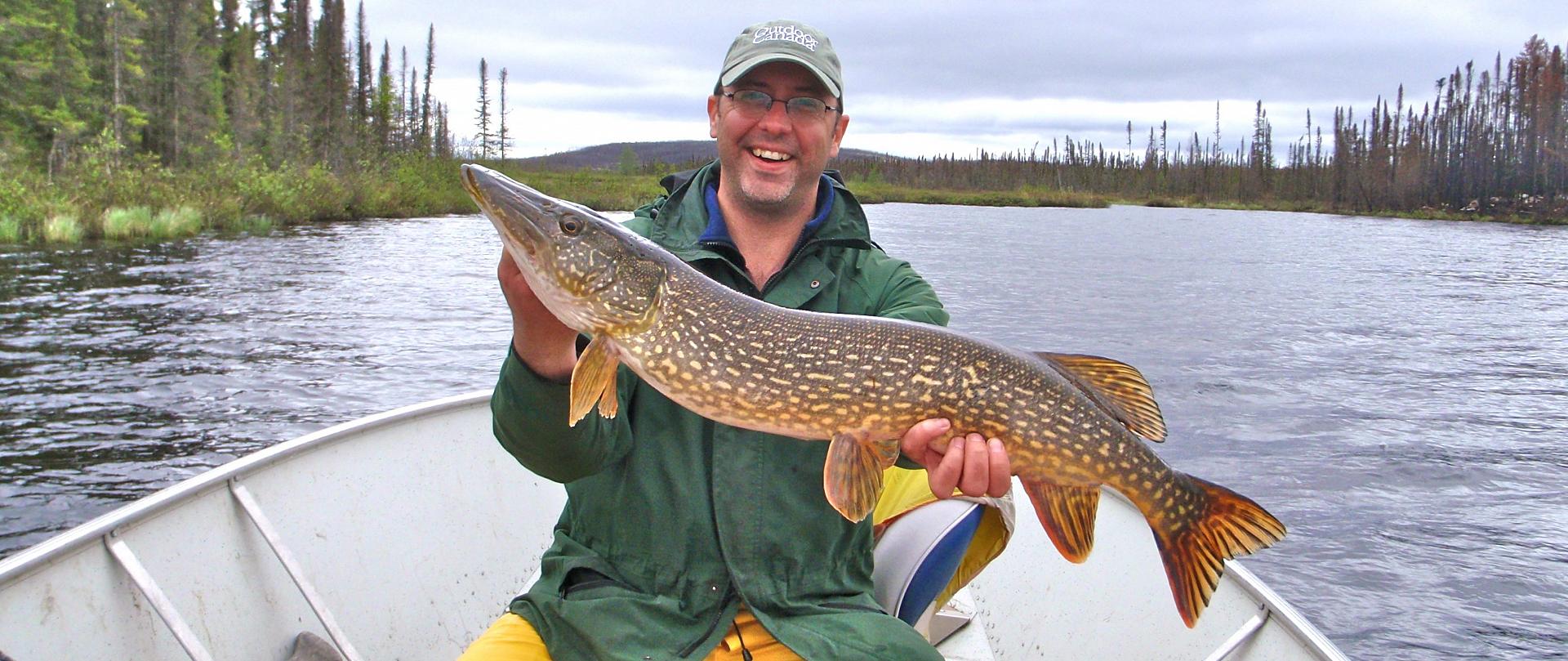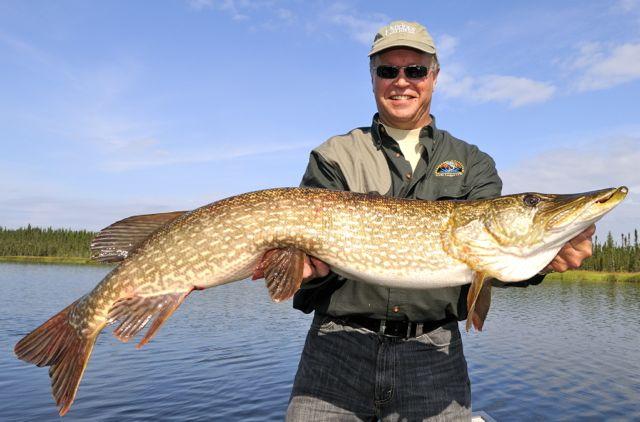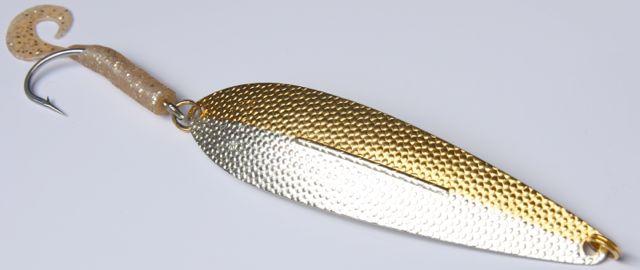OPENING-DAY GATORS
Secrets for fooling big pike with modified spoons, quick-strike rigs and fly tackle
Advertisement
#1 The Spoon Solution
What’s not to like about spoon-feeding northern pike, especially when you catch the biggest fish of the season? That’s what my buddy Mark Stiffel (below) and I did two years ago on northern Saskatchewan’s Reindeer Lake. Of all the guests at Arctic Lodges, we caught the four largest fish using big Williams Whitefish dressed with curly tail grubs. The key was locating the deepest patches of cabbage adjacent to the main body of the lake, where the pike no doubt thought the spoons were tasty ciscoes swimming over their heads. And this pattern doesn’t just shine at ice-out—it also produces through the summer and into early autumn.
Advertisement
Rod: A 7½- to nine-foot-long medium-heavy-action baitcasting rod or light bucktail-action muskie stick is ideal for swimming spoons over the top of cabbage and coontail beds.
Reel: Use a fast-ratio baitcasting reel—I like the speed demon Shimano Tranx because it winds in almost four feet of line with a single turn of the handle. You need maximum speed and control so you can keep ticking the tops of the weeds without getting snagged.
Line: I prefer 40- to 50-pound Sufix Performance braid for spoon-feeding pike. Why? If I get too close to the vegetation and inadvertently hook a few strands, I can usually cut them with the thin-diameter, non-stretch line, then shed anything that clings to the spoon when I pop the rod smartly.
Advertisement
Leader: Forget stiff wire and stick with a flexible foot-long leader made of 80-pound test fluorocarbon, which will give the spoon better action.
Lure: You can’t beat a size C90 Williams Whitefish spoon in Silver/Gold Nu-wrinkle; replace the treblehook with a single siwash dressed with a white, six-inch curly tail grub (above).
Advertisement
Technique: The key is being able to control the depth of the spoon—you want it weaving along briskly in the zone between the tops of the weed stalks and the water’s surface. That’s where the long rods and fast-ratio baitcasting reels come into play.



